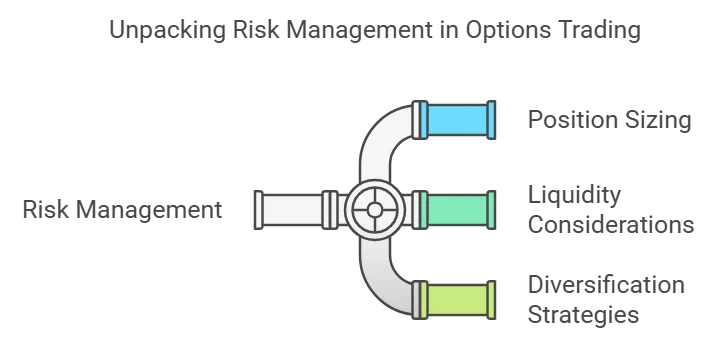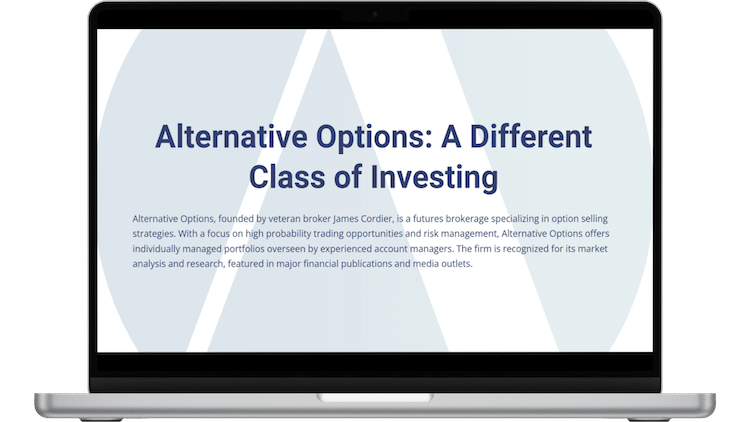The Foundation of Strategic Position Management
At the heart of professional options trading lies a disciplined approach to position management. Far from the simplistic “set and forget” mentality that plagues many retail traders, successful institutional options traders understand that each position represents a carefully orchestrated balance of risk and reward. This balance begins with thoughtful strike price selection.
Strike price selection in commodity options demands a nuanced understanding of market fundamentals. While equity options traders often focus primarily on technical levels or implied volatility, commodity options require a deeper appreciation of physical market dynamics. A grain trader, for example, must consider not only price levels but also seasonal harvest patterns, global weather conditions, and even geopolitical factors that might impact transportation routes.
Time horizon selection proves equally crucial in position management. The natural ebb and flow of commodity markets often follows seasonal patterns that can extend for months. Professional traders learn to align their time horizons with these underlying market rhythms. Rather than chase short-term premium in nearby options, experienced traders often look further out in time where patient capital can be rewarded.

The Art of Risk Management
Risk management in options trading isn’t merely about setting stop losses – it’s about creating a comprehensive framework that acknowledges and prepares for market uncertainty. Professional traders understand that risk manifests in multiple forms, from the obvious price risk to the more subtle dangers of liquidity constraints and correlation breakdown.
Position sizing serves as the foundation of risk management. Even the most carefully analyzed trade can face unexpected market moves. By properly sizing positions relative to account equity, traders ensure that no single position can significantly impair their overall portfolio. This approach requires both discipline and a realistic assessment of market liquidity. In commodity options, where markets can sometimes be less liquid than their equity counterparts, position sizing takes on added importance.
Diversification in commodity options trading extends beyond simply trading different markets. True diversification comes from understanding the underlying drivers of each market and ensuring that positions aren’t inadvertently concentrated in markets driven by similar factors. A portfolio that appears diversified across agricultural, energy, and metal options might still face concentrated risk if all positions depend heavily on Chinese economic growth, for example.

Market Selection and Analysis
The selection of appropriate markets for options trading requires both art and science. Successful traders develop a deep understanding of individual market characteristics, from the technical aspects of contract specifications to the nuanced impacts of seasonal patterns and fundamental drivers.
Fundamental analysis in commodity markets begins with supply and demand, but it doesn’t end there. Professional traders must understand the entire supply chain that impacts their chosen markets. In energy markets, this might mean studying everything from OPEC production quotas to refinery maintenance schedules. In agricultural markets, weather patterns across multiple growing regions can prove crucial. This comprehensive approach to fundamental analysis provides the confidence needed to hold positions through market volatility.
Market liquidity analysis requires equal attention. Unlike equity markets, where options liquidity often correlates directly with the underlying stock’s trading volume, commodity options can exhibit more complex liquidity patterns. Certain contract months might trade actively while others remain relatively illiquid. Understanding these patterns helps traders select positions that can be efficiently entered and exited.

Implementation: From Theory to Practice
The transition from understanding options theory to implementing a successful trading program requires careful consideration and systematic execution. Professional traders distinguish themselves not just through their market knowledge, but through their methodical approach to trade implementation.
Trading capital should be viewed as a precious resource, deployed only when conditions align with well-defined criteria. This doesn’t mean waiting for “perfect” trades – such a thing rarely exists in commodity markets. Instead, professional traders look for situations where fundamental analysis, market conditions, and risk parameters converge to create favorable opportunities.
Consider the natural gas market as an example. A professional trader doesn’t simply sell options at arbitrary strike prices. They study storage reports, weather patterns, and production data. They understand how these factors historically impact price behavior during different seasons. When selling options, they select strikes that not only offer attractive premium but also align with their fundamental analysis of where prices are unlikely to trade.

The Role of Documentation and Review
Professional traders maintain detailed records of their analysis and decision-making process. This goes far beyond simple profit and loss tracking. Each trade should have a clear thesis, documented entry criteria, and predetermined risk management parameters. This documentation serves multiple purposes: it enforces discipline, enables performance review, and provides valuable learning opportunities.
Regular review of trading results becomes particularly valuable when analyzed in the context of the original trade thesis. Did the market behave as expected? If not, what factors were overlooked? Even profitable trades deserve scrutiny – sometimes positive results can mask flawed analysis, leading to larger losses in the future.
Performance Measurement: Beyond Simple Returns
While absolute returns often capture the most attention, professional traders focus on a broader set of performance metrics. Risk-adjusted returns provide deeper insight into trading effectiveness than raw profit numbers. Understanding how much risk was assumed to generate returns helps refine and improve trading approaches over time.
Correlation analysis plays a crucial role in performance measurement. A key advantage of commodity options trading is its potential for low correlation with traditional investments. However, this benefit must be regularly verified through analysis. Correlation patterns can shift, particularly during market stress, and positions that seemed diversifying might suddenly move in tandem.
The Professional Edge: Knowledge and Process
What truly separates professional options traders from amateur speculators isn’t just their knowledge – it’s their process. This process encompasses everything from initial market analysis to final position liquidation. It provides structure during volatile markets and helps maintain discipline when emotions might otherwise drive poor decisions.
Understanding market fundamentals provides the foundation, but successful implementation requires more. Professional traders develop detailed protocols for position sizing, risk management, and trade documentation. They understand that consistent success comes not from occasional brilliant trades but from methodical application of sound principles.

Integration with Existing Portfolios
Options trading shouldn’t exist in isolation. Professional traders understand how their options positions interact with other investments. This becomes particularly important when trading commodity options as part of a larger portfolio. Position sizing must consider not just the options account itself but the broader portfolio context.
Modern portfolio theory suggests benefits from combining assets with low correlation. Commodity options can potentially provide this benefit, but careful analysis is required. Different commodity sectors may offer varying degrees of portfolio diversification. Energy options might show different correlation patterns than agricultural options, for example.
Is Managed Option Selling For You?
Learn How to put the Pros to work on Your behalf. Are you a high net worth investor seeking the potentially high yields and diversification that only selling can offer? A managed portfolio can give you access to these benefits without the time commitment or experience necessary to excel in writing options. Learn all the details inside our Free Investor Discovery Kit. Get yours today!

Option selling involves the risk of loss


